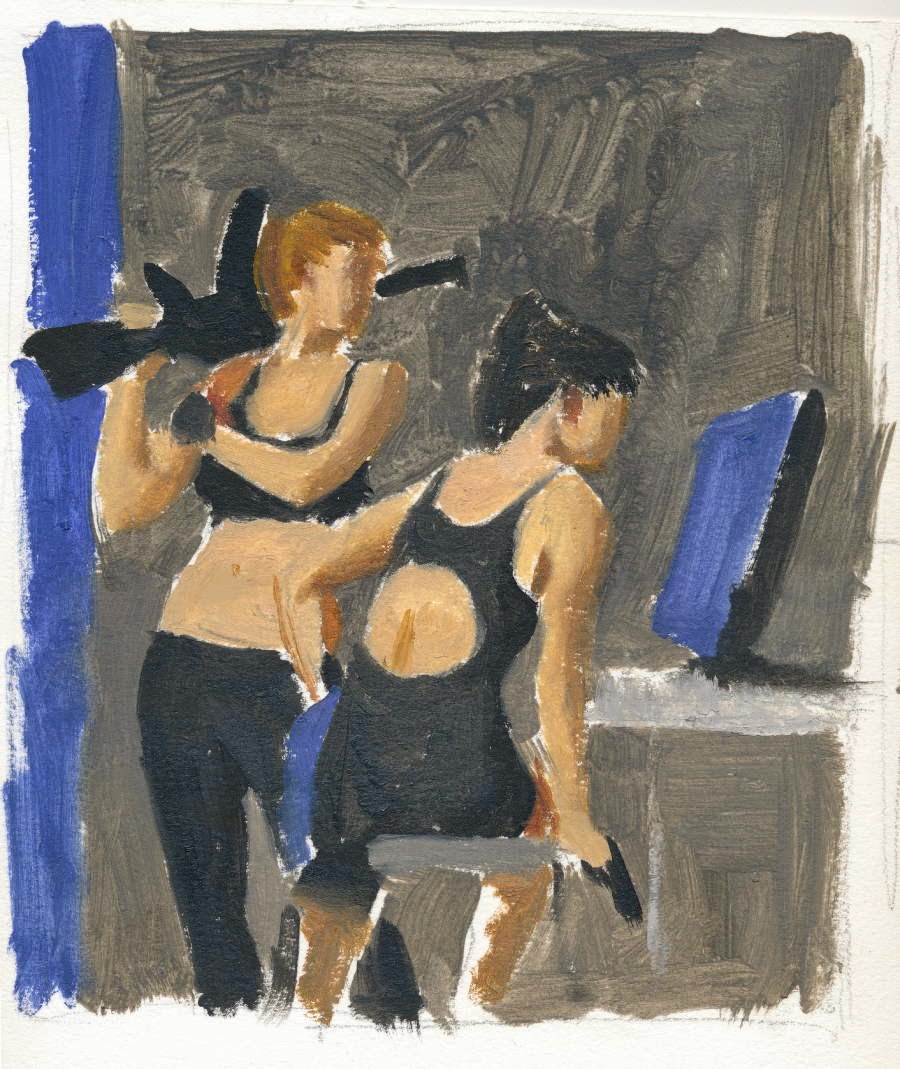Over the last few years I have shifted the focus of my large figurative works from those depicting painters and models in traditional painting studios to a setting and a subject whose participants at first appear far removed from the proverbial garret, but in fact are working toward aims similar to the painter, though in a far different context: this setting is the motion capture studio.
In my painter and model series, the dialectic of observer/observed aligned with traditional notions of the male creative force inspired by the female form. This conventional narrative, retold since Ovid's story of Pygmalian, has, for generations, been a symbol of the creative act of the visual artist.
I was interested in depictions female characters in less traditional roles, and began looking for inspiration in works such as Domenichino's, Diana and her Nymphs and Degas's Young Spartans, both of which show women with agency. About this time I also had a chance to visit a motion capture studio in Chicago, and did some research on the motion capture process and game characters like Lara Croft. I also met with game animators and found my training had much in common with theirs, from figure anatomy to form rendering to color theory to aesthetics. I decided to make a series of paintings from the point of view of those working at the grueling and unglamorous process of motion capture. I use traditional painting methods and materials to depict motion capture studio environments that show the interplay between female athletes, whose bodies are covered with tiny glass markers and male technicians, who, as they skillfully manipulate computers, unwittingly continue Pygmalion's efforts.
In making these paintings, I also was inspired by mystical religious imagery, including the ritualistic wall paintings of Pompeii, and the Himalayan paintings such as those of the god Rahula, whose dark body is covered with human eyes.
Below I document the process of painting Motion Capture Studio 04. The work is 40" x 40", oil on linen. Painted from models, in natural light, using traditional oil painting techniques.
 |
| Sketchbook study of Jess with cardboard rifle. |
 |
| Cartoon drawings on vellum of Jess twice, to test composition. |
 |
| Tracing paper overlays of Jess and Helen, scaled to the ultimate canvas size. |
 |
| Tracing paper cartoon: a retracing of the two figure to test overlaps. |
 |
| Small oil on paper sketch for color and value. |
 |
| Second oil sketch on paper. |
 |
| Drawing transferred to canvas; block in started. Model on break in background. |
 |
| Second layer on the left figure; block in of central figure. The right 'tech' still not resolved. |
 |
| Helen was not available, so I began work with another model. Series of large cartoons on trace. |
 |
| Overlay of model over Helen's figure, to test the overlaps. |
 |
| Trying another cartoon over Helen's figure. |
 |
| I decided to remove the rifle, and replace it with a folding bike. Study on dotted dressmaker paper. |
 |
| Another bicycle drawing on dressmaker paper. |
 |
| Work in progress. The central and righthand figures were later removed and repainted from other models. |
 |
| Final painting: Motion Capture Studio 04, oil on linen, 40" x 40" |
 |
| image of Rahula, a god covered with eyes. He resembles a figure in a motion capture suit, which is typically black and covered with tiny glass markers. |


















No comments:
Post a Comment